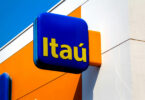The Hashgraph Association has launched an enterprise program, setting aside up to $22.5 million to accelerate projects using the public Hedera DLT network for enterprise projects. Hedera has a Governing Council populated by 28 major organizations, including Boeing, Google, IBM and Nomura. In other news, a recent hack raised questions about Hedera’s decentralization.
The Association was funded by grants of Hedera’s HBAR tokens and it operates as a non-profit. In 2021 the Hedera Governing Council set aside 10.7 billion HBAR worth more than $700 million today, with the bulk going to the separate Hashgraph Foundation.
The Hashgraph Enterprise Program aims to support 40 projects a year that will receive up to $500,000 equivalent in HBAR tokens. Projects which have co-funding lined up will get preference.
It has already pre-qualified several projects, including some involving Governing Council members.
“In 2022, we welcomed over 36 projects around the globe and onboarded more than 18 ecosystem partners, including some of the world’s leading system integrators (IBM, HCL, Orange) and academic institutions (Fraunhofer, University of Zurich, ESSEC),” said Kamal Youssefi, President of the Board of The Hashgraph Association. “This initial success demonstrates our commitment towards enabling the build-up of a vibrant ecosystem for Hedera-powered projects and enhancing the professional environment for the Hedera community.”
Youssefi was previously on the Hedera Governing Council representing Swisscom Blockchain, the only enterprise we know of that withdrew from the Hedera Council.
At the same time, it was announced that Rob Allen becomes Executive Director of the Hashgraph Association, joining from the Hashgraph Foundation. He was also formerly on the Governing Council representing the Australian payments organization eftpos.
Hedera Hack raises centralization question
Meanwhile, last month Hedera suffered its first publicly known hack with a loss of around $600,000. The hack was limited because the network was quickly taken offline. While it’s known that the Governing Council members control all the nodes that write to the network, the network shutoff was done by Hedera and Swirlds Labs staff alone. In other words, by two closely related firms, not 28 enterprises.
That was possible because they have secure access to a proxy system that provides security protection to the network, effectively making the Council’s nodes hard to find. The two firms have access to all the proxies even though 14 Council members have deployed the proxies onto their own nodes.
While it’s great that the hack could be addressed so promptly, it puts a major question mark on the degree of decentralization of the network.
The hacker exploited a bug in Hedera’s mainnet code. This allowed them to get transaction approval using the DEX liquidity pool credentials rather than their own. The bug was fixed and the network was back in action 41 hours after going offline.






